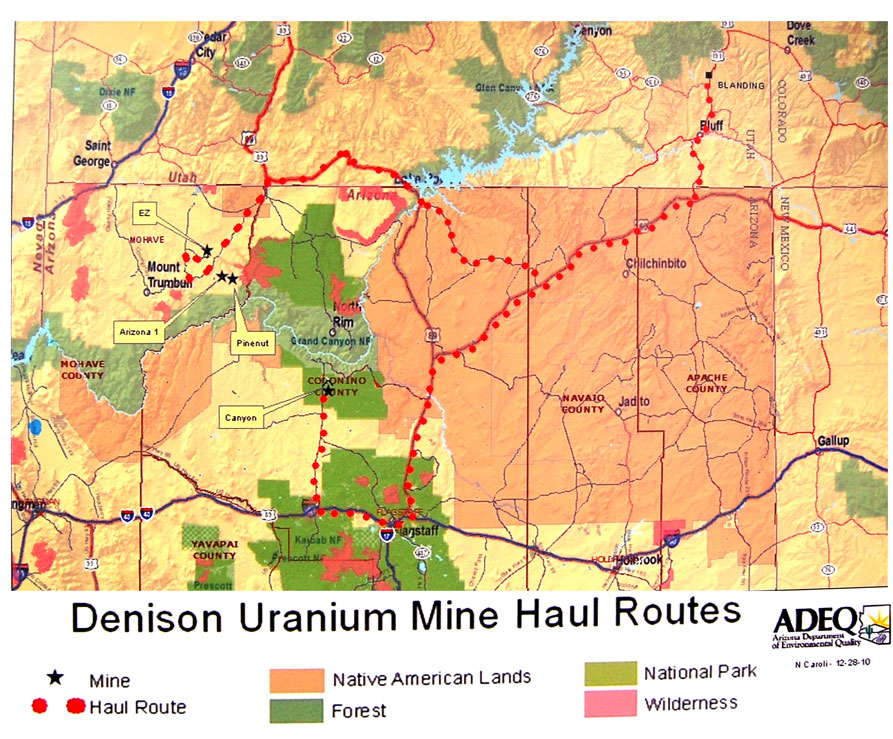FOR IMMEDIATE RELEASE
DATE: Wednesday December 1, 2010
NOTE TO EDITORS: For a background, legal documents, photos, updates, and further information please visit: www.TrueSnow.org . Interviews can be arranged.
District Court Rules For USFS in Save the Peaks Case
Plaintiffs will Appeal the Court’s Decision to the Ninth Circuit Court
FLAGSTAFF, AZ — The case known as The Save the Peaks Coalition, et al. v. U.S. Forest Service (USFS) was heard before Honorable Judge Mary H. Murguia and today a decision was made.
The Court ruled against the plaintiffs claims that the final FEIS prepared by the USFS ignores thorough consideration of a number of critical health issues. The plaintiffs contend that a new and thorough FEIS should be filed by the USFS. If this reveals that the use of reclaimed sewage water is a public health risk then snowmaking should not be permitted for the Arizona Snowbowl on the San Francisco Peaks.
Howard Shanker, representing the Save the Peaks Coalition and additional plaintiffs, will file an appeal to the Ninth Circuit Court. According to Shanker, “ the decision misstates the facts of this case and misapplies the law. That’s why there is an appeal process.” Further, according to Shanker, “it is remarkable that the Obama Administration is complicitous in this effort to put treated sewer water on the San Francisco Peaks. Not only is the site sacred to Native Americans in the Southwestern United States, the Forest Service has, at best, no idea what the long term health impacts will be on people who ingest this snow made from treated effluent. Who figured the Snowbowl ski area was ‘too big to fail’”.
Judge Mary Murguia ruled that plaintiffs were barred from bringing this action by the doctrine of latches largely because of the “near completion of the project”.
“This is remarkable in light of the fact that there was a stipulation in place until yesterday barring any ground clearing activities in furtherance of snowmaking and no final approvals were provided by the government until recently – none of which have been implemented on the ground. That is the project is not “near completion” but rather has not even begun.” stated Shanker.
Judge Murguia also ruled that the Forest Service adequately considered that people would ingest snow made from reclaimed sewer water in the EIS. “Notwithstanding that the only other court to rule on this issue substantively was the three judge panel of the Ninth Circuit, which found that the Forest Service failed to comply with NEPA and the fact that the EIS does not contain a discussion of the impacts.” stated Shanker.
The suit asserts, among other things, that the FEIS ignores the possibility of human ingestion of snow made from treated sewage effluent. Snowbowl would be the only ski area in the world to use 100% wastewater to make snow. They would use 1.5 million gallons per day, storing and spraying this wastewater on a mountain that is holy to more than 13 Indigenous Nations.
“This case was filed because we insist that our children not be used as guinea pigs for the profit of a single private business operating on our public lands,” stated Jeneda Benally, a complainant in the lawsuit. “The Forest Service already has admitted that there was no consideration of the impacts if children consumed wastewater snow that they acknowledge contains untreated contaminants.”
Arizona Department of Environmental Quality regulations allow A+ class treated sewer water to contain fecal matter in three out of seven daily samples (R18-11-303 2a). Moreover, studies done by Dr. Catherine Propper, Professor of Biological Sciences at Northern Arizona University, on this same treated sewer water have concluded the waste water contains pharmaceuticals, hormones, endocrine disruptors, industrial pollutants such as pesticides and herbicides, and narcotics. David Norris, PhD, an integrative physiology professor at the University of Colorado at Boulder, found that pharmaceutical ethinylestradiol (an orally active semisynthetic steroidal estrogen) made it through the Boulder Wastewater Treatment Plant and into Boulder Creek. He reported that the percentage of native male fish in Boulder Creek decreased and that numerous intersex fish were found downstream of the wastewater treatment plant. He stated “the fish are a wake-up call; our bodies and those of the much more sensitive human fetus are being exposed everyday to a variety of chemicals that are capable of altering not only our development and physiology but that of future generations as well.”
In addition, according to biologist Dr. Paul Torrence, the treated sewage effluent may also contain antibiotics such as triclosan and triclocarban which break down into bio-accumulating cancerous dioxins when exposed to high altitude sunlight. Plaintiffs involved in this ongoing lawsuit have consistently insisted that the USFS take a hard look at what might happen to the people when they come in contact with or ingest snow made from treated sewage effluent. Under the National Environmental Policy Act, the USFS is obligated to consider these types of potential impacts on the quality of the human environment.
In 2007, a three-judge panel of the Ninth Circuit Court found that the USFS failed to adequately consider the possibility of human ingestion of snow made from treated sewage effluent. In Judge William Fletcher’s opinion, he concludes that “the FEIS does not contain a reasonably thorough discussion of the risks posed by possible human ingestion of artificial snow made from treated sewage effluent, and does not articulate why such discussion is unnecessary.” While the decision of the three-judge panel was later overturned on a technicality by an en banc panel of the Ninth Circuit, issues surrounding the completeness of the FEIS were left unresolved.
# # #

 Commentary & Essays11 years ago
Commentary & Essays11 years ago
 anti-colonial5 years ago
anti-colonial5 years ago
 Feature Front1 year ago
Feature Front1 year ago
 anti-colonial5 years ago
anti-colonial5 years ago
 #nonukes11 years ago
#nonukes11 years ago
 anti-colonial3 years ago
anti-colonial3 years ago
 #nonukes15 years ago
#nonukes15 years ago
 #policestate4 years ago
#policestate4 years ago



















